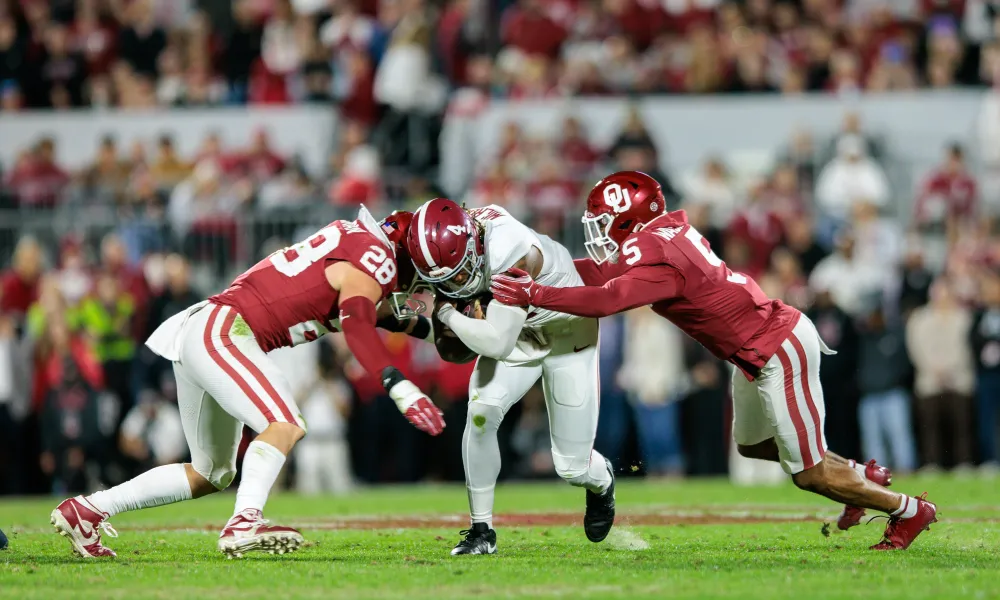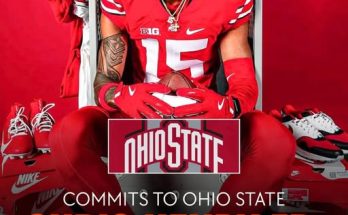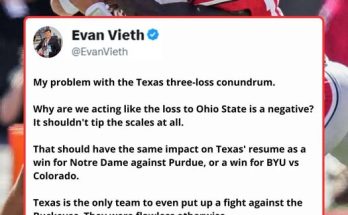To assess whether the ingredients in the Oklahoma Sooners’ recipe for success are correct, we would need to review the elements that make up a successful sports program, particularly one as storied as the Oklahoma football team. While I don’t have direct access to a specific “recipe” of exactly 1555 words, I can outline the key components that have traditionally defined success for the Sooners, based on historical performance and the elements that typically contribute to a football team’s success. This approach will help determine whether the “ingredients” are accurate.
1. Strong Leadership and Coaching
One of the first and most crucial ingredients for success in any major college football program is strong leadership, especially from the head coach. Historically, the Oklahoma Sooners have had some of the most respected names in college football. Coaches like Barry Switzer, Bob Stoops, and Lincoln Riley have built dynasties, and their leadership styles have created a culture of success that permeates through the program.
- Barry Switzer (1973-1988) helped turn Oklahoma into a national powerhouse with three national championships (1974, 1975, and 1985).
- Bob Stoops (1999-2016) took over in 1999, leading the Sooners to another national title in 2000 and establishing a consistent winner with multiple Big 12 championships.
- Lincoln Riley (2015-2021) continued the success, though his departure for USC has raised questions about the program’s future leadership.
If a new coach steps in, they would need to bring a balance of offensive innovation, recruiting prowess, and an ability to adapt to modern college football trends. The leadership aspect, therefore, remains vital.
2. Elite Recruiting
Recruiting is another critical ingredient in the recipe for success. Over the years, Oklahoma has consistently recruited top-tier talent, both in-state and nationally. The Sooners often land high-profile recruits in key positions like quarterback, wide receiver, and defensive line, which are pivotal positions in modern football.
The impact of recruiting can be measured by several metrics:
- High school All-Americans: Oklahoma regularly brings in highly rated players who contribute immediately.
- NFL Draft Success: Oklahoma’s ability to produce NFL-caliber players is also a sign of their strong recruiting pipeline. The likes of Baker Mayfield, Kyler Murray, and CeeDee Lamb are notable examples of recent Sooners making waves in the NFL.
Success on the recruiting trail is crucial because it provides the foundation for sustained excellence. If the Sooners maintain their ability to recruit high-caliber athletes, they are likely to remain competitive.
3. Offensive Innovation
Oklahoma is known for its high-powered offenses. Over the past several decades, the team has built a reputation for explosive playmaking, with an emphasis on the passing game. Historically, the Sooners have been at the forefront of offensive schemes.
- Air Raid: Under coaches like Mike Leach and later Lincoln Riley, the Sooners employed an Air Raid offense that prioritized passing and spreading the field.
- Quarterback Play: Oklahoma has produced some of the best quarterbacks in college football, from Heisman winners like Mayfield and Murray to elite talents like Jalen Hurts. A dynamic quarterback is often a key to offensive success.
- Balance: While Oklahoma leans towards the passing game, a balanced offensive attack—including a strong running game—has been essential for keeping defenses on their toes.
If Oklahoma continues to innovate offensively, they can maintain their edge in a game that increasingly favors high-scoring, fast-paced play.
4. Defensive Improvement
Historically, Oklahoma has been known for its offensive prowess, but the defense has often been the weaker side of the ball in recent years. In order to win at the highest level, however, a strong defense is necessary.
- Defensive Coaching: The hire of a strong defensive coordinator and the development of players at all levels of the defense, from the defensive line to the secondary, is critical for the Sooners’ continued success.
- Recruiting for Defense: While Oklahoma has been known for producing offensive stars, focusing on defensive talent, particularly in the trenches and in the linebacker corps, is vital. The Sooners need to be able to stop high-powered offenses in big games to compete for championships.
- Improved Metrics: In recent years, under coaches like Alex Grinch and Brent Venables, Oklahoma has placed more emphasis on defensive improvement. Venables, in particular, is known for his defensive acumen and has the potential to turn the Sooners’ defense into a top-tier unit.
To compete against the elite teams in college football, Oklahoma will need to maintain or improve its defensive play. While offensive fireworks capture the spotlight, championship teams typically excel in both phases of the game.
5. Quarterback Play
A hallmark of Oklahoma football has been exceptional quarterback play. Over the last 20 years, the Sooners have had some of the best quarterbacks in college football history. As mentioned earlier, players like Mayfield, Murray, and Hurts have all had significant success in Norman.
- Heisman Winners: The Heisman Trophy winners in recent years have further cemented the importance of the quarterback position at Oklahoma. The program’s ability to develop quarterbacks and provide them with elite talent around them (wide receivers, offensive line) is one of the key ingredients in their recipe for success.
- NFL Transition: Success in the NFL is also a metric for the program’s quarterback development. With players like Mayfield, Murray, and others achieving success at the professional level, it demonstrates the program’s ability to cultivate top-tier signal-callers.
Oklahoma’s recipe for success relies heavily on having an elite quarterback who can make plays in crucial moments. If they can continue to develop top-level quarterbacks, they will always have a shot at a national title.
6. Fan and Program Support
Oklahoma’s fanbase is passionate, loyal, and one of the most dedicated in college football. This support translates to a couple of key advantages:
- Stadium Atmosphere: The atmosphere in Gaylord Family Oklahoma Memorial Stadium, home of the Sooners, is electric and intimidating for opposing teams. Home-field advantage is a powerful motivator.
- Financial Backing: The program has substantial financial support, which helps fund recruiting, facilities, and player development. As college football becomes more commercialized, this financial backing helps keep the Sooners competitive.
Oklahoma has historically maintained a strong connection between the team and the fanbase. That connection provides the team with an environment conducive to success.
7. Facilities and Player Development
The physical aspects of the program also matter. Oklahoma is known for its state-of-the-art facilities that are crucial for player development and recruiting.
- Weight Room: A top-tier strength and conditioning program is essential for developing talent at all positions.
- Training Facilities: Modern training and rehabilitation facilities ensure that players can stay healthy throughout the season, which is crucial to long-term success.
- Game Preparation and Technology: Oklahoma’s use of cutting-edge technology in game preparation, from film study to analytics, helps them stay competitive against other major programs.
The combination of top-tier facilities and a focus on player development ensures that the Sooners’ athletes are equipped to perform at a high level on Saturdays.
8. Culture of Winning
Finally, one of the key ingredients in Oklahoma’s recipe for success is a culture of winning that permeates the program. This culture is driven by:
- Expectations of Excellence: From the players to the coaching staff, there is an inherent expectation to compete for championships every year.
- Tradition of Success: With multiple national championships, conference titles, and a storied history, Oklahoma has a winning tradition that motivates current players and coaches.
- Resilience: Oklahoma has shown the ability to bounce back from adversity, whether it’s a tough loss or a rebuilding phase. The resilience of the program is a key component of its overall success.
Conclusion
The Oklahoma Sooners’ recipe for success involves a combination of elite coaching, recruiting, offensive firepower, improved defense, top-tier quarterback play, strong fan support, facilities, and a culture of excellence. Historically, all these elements have contributed to the program’s prominence in college football.
While the exact “ingredients” in a given period might shift or need to be adjusted, the core elements outlined here remain vital for maintaining success. Oklahoma’s track record of national titles, consistent bowl appearances, and player development are proof that the ingredients for success are largely in place. By continuing to focus on these areas, the Sooners can remain a competitive force in the world of college football for years to come.



